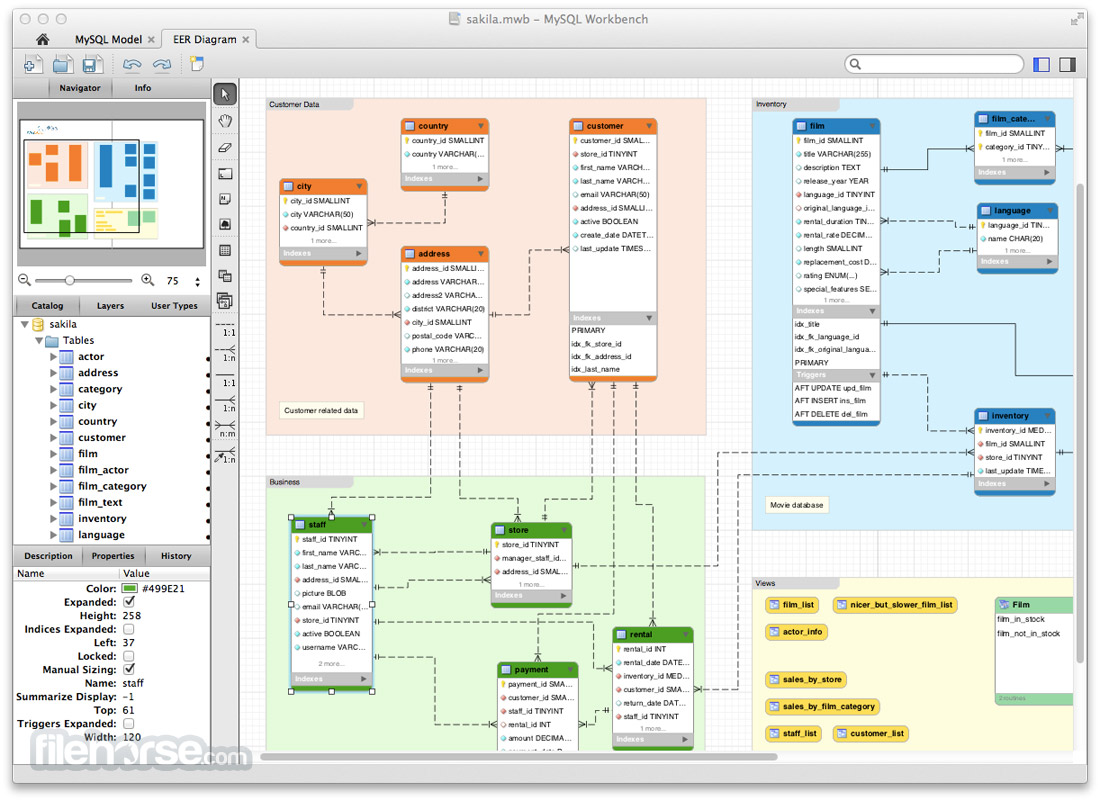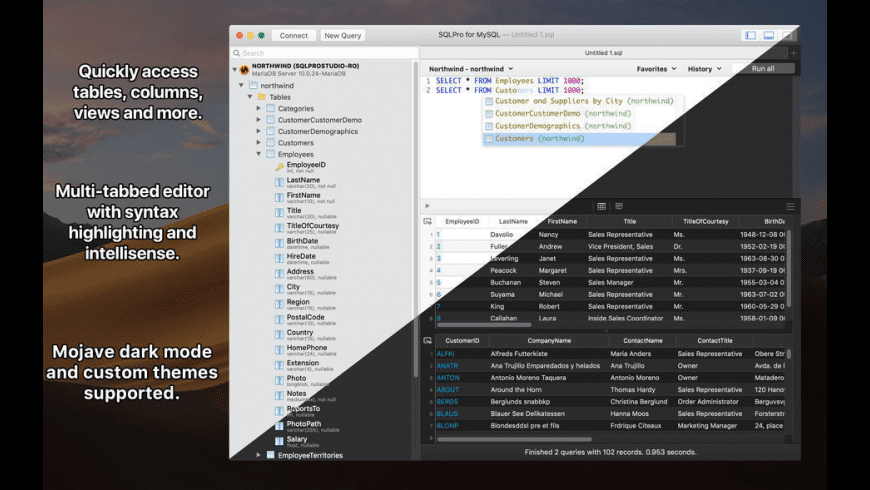- How To Download Mysql Workbench On Mac
- How To Install Mysql In Mac Os
- How To Download Mysql
- Install Mysql In Mac
MySQL High Availability - InnoDB Cluster & InnoDB ReplicaSet (2020-02-27) Why Every Business Should Use MySQL Enterprise Edition (2020-02-20) Staying off the Front Page with MySQL Enterprise Edition (2019-08-22) MySQL InnoDB Cluster: New features in 8.0 (2019-07-30) Why MySQL High Availability Matters for your Business (2019-07-24).
I have been always playing with the Apache, PHP, and MySQL every time but since when I switched to Mac and wanted to make a web development environment on my Mac. So the first step is to install Apache, PHP, and MySQL.
Install Apache for Mac OS
Since Mac OS is ultimately built on Unix so it is very to install any Unix supporting software. The most interesting part is that Mac OS comes with the Apache web server and we just need to start it and make some changes to setup our development environment.
Now, We need to start the apache server with root privileges to avoid permission issues.
Therefore, just launch the terminal type the command as follows:-
After starting Apache – test to see if the webserver is working in the browser – http://localhost – you should see the “It Works!” text.
Creating Apache VirtualHosts
The default location for Apache webserver project files is /Library/WebServer/Documents/. In this location, you all can create your application in order to host your web applications.
To enable VirtualHosts, we need to make some changes in the Apache Configuration file (httpd.conf).
Make sure that you change your DocumentRoot, ServerName and Directory location according to your needs.
Now your VirtualHosts setup is done now, just restart the apache with command
Install PHP on Mac OS X
In order to install PHP, in Mac OS you will just need to enable PHP support for Apache, i.e, to need to make changes in its (httpd) configuration file.
Open httpd.conf file with the command as follows:-
Uncomment below the line and save it.
LoadModule php7_module libexec/apache2/libphp7.so
Now restart the server and it should be able to process PHP files. To test it we can create a simple PHP file as below.
Create test.php file in the /Library/WebServer/Documents/ directory with the following lines of code as shown below and save it.
Load the PHP file in browser with URL http://localhost/test.php and you should see a huge page with all the PHP configurations as shown below:-

Congrats now you have successfully installed PHP on your Mac OS.
Installing MySql on Mac OS
Installing MySQL in Mac OS is very simple you will just have to download MySQL dmg file from the MySQL website and just press next, next in order to install.
Download the MySql DMG file from MySql Download Website.
Open the DMG file and install MySql server

Start the MySql server if it’s not running and you can find MySQL in system preferences.
Click on MySQL and you will see the screen as below:-
If you want to control MySQL through your terminal then you will have to add MySQL directory to your shell path, this is done in your “.bash_profile” file in your home directory if you don’t have that file just create it using vi or nano:
open that “.bash_profile” and add the following line and save it.
export PATH=${PATH}:/usr/local/mysql/bin/
How To Download Mysql Workbench On Mac
Now, you can access MySQL through your terminal, in order to check just type the command as follows:-
Now, you have successfully connected your MySQL server through your terminal.
If you want to change the MySQL root password then just login to MySQL and the query as follows:-
Change the lowercase ‘MyNewPass’ to what you want – and keep the single quotes.
Now you have successfully installed all your web development environment. If you want to GUI to manage MySQL then you can install MySQL workbench.
If you have any queries do post your questions in the comment section below: 🙂

How to install MySQL server on Mac OS X
Mac OS X has a great design and a lot of tasks are really easy to do. Unfortunately if you want to have MySQL server installed on your Mac this is not always as simple as everything else.
But wait do I need MySQL server?
In many cases you do not. If this is going to be the only computer on which you will have your sales information, you are planning to have only a few operations every day, or you will connect to other computers using IncoCloud, then no, you can use SQLite and keep things simple.
But if you have more than one computer in the office/shop/restaurant connected together – one or more front office computers or tablets and one or more back office computers all in a single location, for example, or you expect many operations made every day, then you need MySQL server to handle the big load.
How To Install Mysql In Mac Os
Important!IncoPOS – our Point of Sale system for macOS can now download, install and configure MySQL server for you. This happens from the built-in wizard when IncoPOS is started for the first time. You can download IncoPOS from here.
The first step is to download MySQL server. Go to the MySQL web site and select the version that matches your version of Mac OS. Select the DMG archive version. After the DMG file finishes downloading click on it to open. Then open the installer inside and follow the installation steps.Warning! Because Oracle has changed the MySQL installer and the default parameters of the MySQL server in newer versions the following steps may no longer work. These steps were tested with MySQL server version 5.5.48 for Mac OS 10.9 (which should work on newer versions too). Please download and install version 5.5.48 to make sure that all the steps will work correctly. If for some reason the installer is no longer available on the MySQL web site you can download it from here.
After the installation has finished, open the System Preferences and you should see the MySQL icon. Click on it to open the MySQL server preferences. Now press the Start MySQL server button so MySQL would actually start working. Make sure to leave the checkbox “Automatically Start MySQL Server on Startup” so you won’t have to do that again.Now comes the tricky part. By default MySQL server installs without password and does not restrict access to the information on it. This is not a great idea for us because your information is sensitive and we don’t want the whole world to be able to access it.
For the next part you need to open the Terminal app.
- To open the Terminal app click on the magnifying glass icon on the top right on your mac. This will open Spotlight.
- Type terminal in the search field.
- When the Terminal app appears in the list, select it by pressing Enter.
In the Terminal screen, type these commands and press Enter after each one of them:
cd /usr/local/mysql
This will change the current directory to the one where MySQL server is installed
sudo bin/mysql_secure_installation
This command will ask for your computer password. While typing it no characters will be displayed which is normal so don’t worry. Press Enter when finished. This will start a script which will ask you several questions and then reconfigure MySQL.
Set root password? [Y/n]
Select Y and press Enter. After that enter a password for MySQL and press Enter. Re-enter the password and press Enter again. This will be the password that IncoPOS will need when connecting to MySQL server.
Remove anonymous users? [Y/n]Select Y and press Enter. You don’t need anyone but you or someone you told your password to touch your data.
Disallow root login remotely? [Y/n]
Here you have to decide. If you have more than one computer that will be using this data then answer n. If this information will be accessed only from this computer then select Y. In all cases this can later be changed by using the same commands.
Remove test database and access to it? [Y/n]
Select Y and press Enter. You don’t need that test database so it is safe to remove it.
Reload privilege tables now? [Y/n]
How To Download Mysql
Select Y and press Enter. This will make the changes you did effective now.
Install Mysql In Mac
This is it! Now you have MySQL installed and secured on your Mac.